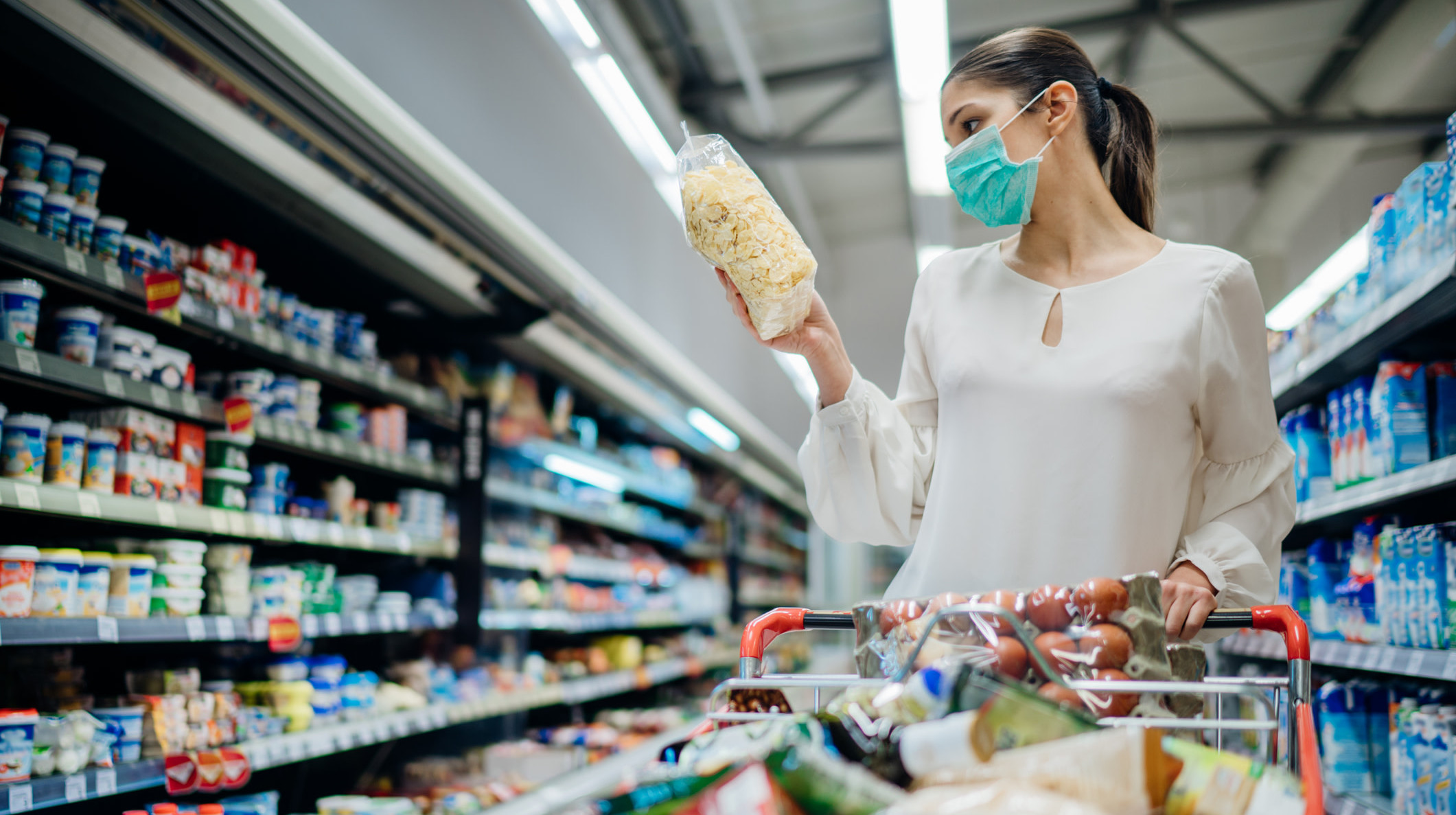Which Groceries Are Getting More Expensive? [Updated]
Update, June 1, 2020: It brought us no joy to report last month that grocery prices were spiking due to COVID-induced disruptions in the supply chain. And now, according to the Associated Press, some of those higher food prices could be here to stay.
Per the AP, the cost of groceries is at a 46-year high, and market analysts are predicting that certain foods like meat and produce—which require a healthy, constantly producing workforce in order to reach store shelves—might remain more expensive as long as the supply chain is impacted by the virus. "While price spikes for staples such as eggs and flour have eased as consumer demand has leveled off," the AP explains, "prices remain volatile for carrots, potatoes and other produce because of transportation issues and the health of workers who pick crops and work in processing plants."
Meanwhile, certain items are soaring in price because of where we import them from. Much of the United States' garlic, for example, is shipped in from China, whose disrupted supply chain has led to a 278% price increase on garlic, according to the AP.
As for what can be done about this increase, American consumers and businesses seem to be in a bit of a holding pattern at the moment. Jeff Dunn, CEO of Bolthouse Farms, told the AP, "At some point, if you want any chance to hold up any kind of margin, those costs are going to have to be passed on or somehow recognized by the government with some help."
Original post, May 18, 2020: Your eyes are not deceiving you: groceries have been getting a bit more expensive than they were before the COVID-19 pandemic; after stay-at-home orders began across the country in March, the overall price of groceries increased by 2.6% in just one month. At the same time, the cost of other things we buy regularly, like gas and clothing, is falling significantly. Why are groceries getting more expensive when the price of nearly everything else is dropping? It all comes down to the food industry's complicated supply chain, which has been massively disrupted now that restaurants, universities, stadiums, and, well, just about everything else is closed. Then, CNN Business reports, the already precarious supply chain took another major wallop as meatpacking plant employees became sick, shuttering processing plants around the country and creating meat shortages. Combine those two unprecedented problems with panicked customers who have been clearing supermarket shelves and hoarding supplies, and you've got the perfect equation for rising prices: low supply plus high demand equals more expensive groceries.
So, what can you expect to pay more for? These are some of the items that have seen significant price increases over the past month:
- Eggs (16.1% increase)
- Hot dogs (5.7% increase)
- Chicken (5.8% increase)
- Oranges (5.6% increase)
- Cookies (5.1% increase)
- Doughnuts (5% increase)
- Apples (4.9% increase)
- Muffins (4.7% increase)
- Carbonated beverages (4.5% increase)
- Citrus fruits (4.3% increase)
- Fresh fish (4.2% increase)
- Juice (3.8% increase)
- Bread (3.7% increase)
- Canned vegetables (3.6% increase)
- Pork (3% increase)
- Baby food (2.7% increase)
- Canned soup (2.6% increase)
- Instant coffee (2.5% increase)
- Breakfast cereal (1.5% increase)
- Milk (1.5% increase)
- Fresh vegetables (1.5% increase)
- Roasted coffee (1.2% increase)
But it's not all bad news: In addition to gas and clothing, entertainment costs have come down significantly. Also ham, which has seen a 1.7% price drop, and breakfast sausage, which is down by 0.3%. In a way, those are forms of entertainment, too.
